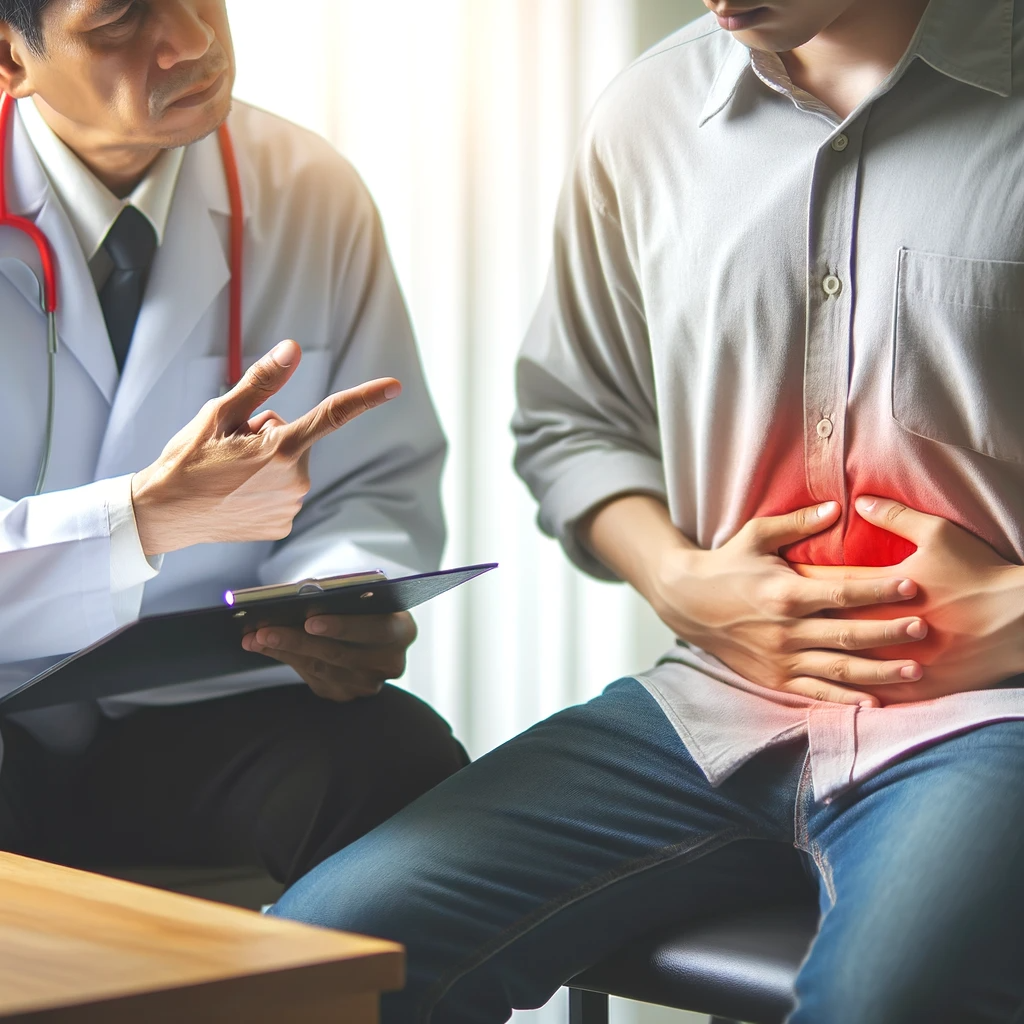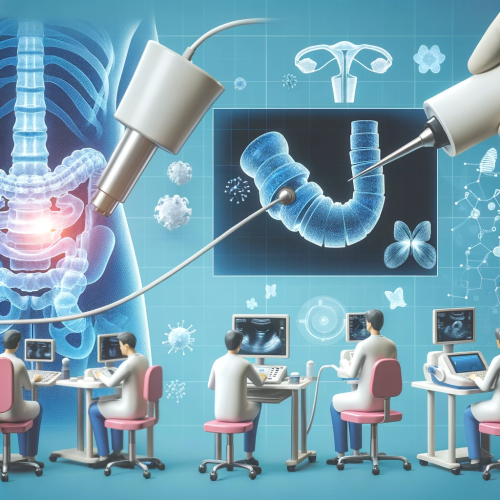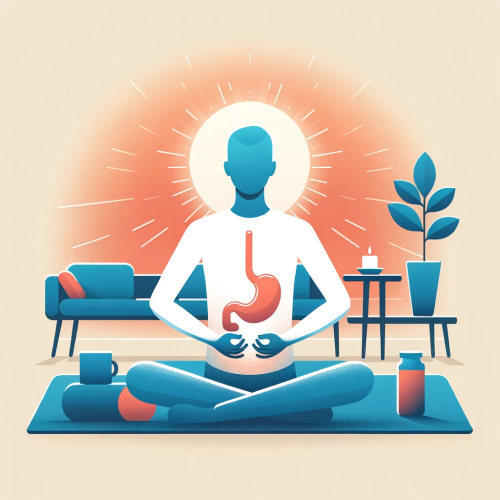
Are you experiencing pain in your abdomen? Don’t worry, you’re not alone. The ABCs of Abdominal Pain is here to help uncover the reasons, risk factors, diagnosis, treatment and prophylaxis for this common ailment. With an easy-to-follow guide that covers everything from the basics to more complex topics, this book is your go-to resource for understanding and managing abdominal pain. From learning about potential causes to discovering ways to prevent it in the future, The ABCs of Abdominal Pain will give you the knowledge and confidence needed to take control of your health.
Unravelling the Mystery of Abdominal Pain: Diagnosis and Treatment
The pain in the abdomen is one of the most common complaints that patients present to their doctor. It can be caused by a wide range of conditions, from minor digestive issues to serious medical emergencies. Unravelling the mystery of abdominal pain requires a thorough evaluation and diagnosis in order to determine the cause and provide effective treatment.
 The first step in diagnosing abdominal pain is taking a detailed history from the patient. This includes questions about when the pain started, its location, intensity, duration, associated symptoms such as nausea or vomiting, and any other relevant information that may help narrow down possible causes. The doctor will also perform a physical examination to assess for signs of infection or inflammation such as tenderness or swelling in certain areas of the abdomen.
The first step in diagnosing abdominal pain is taking a detailed history from the patient. This includes questions about when the pain started, its location, intensity, duration, associated symptoms such as nausea or vomiting, and any other relevant information that may help narrow down possible causes. The doctor will also perform a physical examination to assess for signs of infection or inflammation such as tenderness or swelling in certain areas of the abdomen.
In some cases further testing may be necessary to confirm a diagnosis or rule out potential causes. This could include blood tests, imaging studies such as X-rays or CT scans, endoscopy procedures like colonoscopies or upper endoscopies, and other specialized tests depending on what condition is suspected.
Once an accurate diagnosis has been made based on all available information it’s time for treatment which will depend on what’s causing your pain in the abdomen. For example if it’s due to an infection antibiotics may be prescribed while more serious conditions like appendicitis require surgery to remove the appendix before any other treatments can begin.
Other treatments could include medications for digestive issues like acid reflux disease (GERD) lifestyle changes such as eating smaller meals more frequently throughout the day and avoiding certain foods that trigger symptoms stress management techniques like yoga and meditation psychological counseling if anxiety is contributing to your discomfort physical therapy exercises for chronic muscle tension related pains etc…
Unravelling the mystery of abdominal pain can be challenging but with proper evaluation and diagnosis you can get relief from your discomfort quickly so you can get back to living life without worrying about when your next bout with stomach pains might strike again!
The ABCs of Abdominal Pain: Risk Factors and Prevention Strategies
The ABCs of Abdominal Pain: Risk Factors and Prevention Strategies is an essential guide for anyone looking to reduce their risk of abdominal pain. Abdominal pain can be caused by a variety of factors, ranging from dietary choices to underlying medical conditions. This guide provides a comprehensive overview of the risk factors associated with abdominal pain, as well as prevention strategies that can help you reduce your chances of experiencing it.
The first section covers the A-B-C’s of abdominal pain: what it is, what causes it, and how to recognize its symptoms. It explains that abdominal pain can range from mild discomfort to severe cramping or sharp pains in the abdomen. It also outlines common causes such as indigestion, food poisoning, constipation or irritable bowel syndrome (IBS). Knowing these signs and symptoms will help you identify when you may need medical attention for your condition.
The second section focuses on risk factors associated with abdominal pain. These include lifestyle choices such as smoking or drinking alcohol; certain medications; physical activity levels; stress levels; and dietary habits like eating too much processed food or not getting enough fiber in your diet. This section also covers potential underlying medical conditions that could be causing your discomfort such as Crohn’s disease or ulcerative colitis.
Finally, this guide provides prevention strategies for reducing your risk of developing abdominal pain in the future. These include eating a balanced diet full of fruits and vegetables; exercising regularly; managing stress levels through relaxation techniques like yoga or meditation; avoiding cigarettes and excessive alcohol consumption; taking medications only when necessary; getting regular checkups with your doctor if needed; and avoiding foods known to trigger IBS flare-ups like dairy products or spicy foods if applicable to you personally.
By following The ABCs of Abdominal Pain: Risk Factors and Prevention Strategies guidebook, you can take proactive steps towards reducing your chances of experiencing painful episodes in the future!
Exploring the Causes of Abdominal Pain: A Comprehensive Guide
Abdominal pain is a common complaint that can be caused by a variety of medical conditions. It can range from mild to severe and may be localized or widespread. Exploring the Causes of Abdominal Pain: A Comprehensive Guide is an invaluable resource for anyone suffering from abdominal pain. This comprehensive guide provides detailed information on the various causes of abdominal pain, as well as tips on how to manage it.
The guide begins with an overview of the anatomy and physiology of the abdomen, including its major organs and structures. It then delves into common causes of abdominal pain, such as digestive disorders, infections, inflammation, trauma, and tumors. Each cause is discussed in detail with information about symptoms and treatments available for each condition. The guide also covers other potential causes such as medications or dietary changes that may be contributing to your discomfort.
In addition to exploring potential causes of abdominal pain, this comprehensive guide also provides helpful tips on how to manage it effectively. These include lifestyle modifications such as eating smaller meals more frequently throughout the day; avoiding certain foods; exercising regularly; getting adequate rest; managing stress levels; drinking plenty of fluids; and avoiding smoking or alcohol consumption if possible. The guide also offers advice on when you should seek medical attention for your symptoms so you can get prompt treatment if necessary.
Exploring the Causes of Abdominal Pain: A Comprehensive Guide is an essential resource for anyone suffering from this condition who wants to understand their symptoms better and learn how best to manage them effectively over time. With its detailed information about potential causes and helpful tips on managing your discomfort safely at home or through medical intervention when necessary, this comprehensive guide will help you take control over your health in order to live a happier life free from chronic abdominal pain!
Managing Abdominal Pain:
Effective Options for Treatment of Abdominal Pain
Managing abdominal pain can be a difficult and uncomfortable experience. It is important to seek medical attention if the pain persists or worsens, as it could be a sign of something more serious. Fortunately, there are many effective treatment options available for those suffering from abdominal pain.
One of the most common treatments for abdominal pain is over-the-counter medications such as ibuprofen or acetaminophen. These medications can help reduce inflammation and provide relief from mild to moderate discomfort. Additionally, antacids may be used to treat heartburn or indigestion that may accompany abdominal pain.
Prescription medications may also be prescribed by your doctor depending on the cause of your abdominal pain. For example, antibiotics may be prescribed if an infection is causing the discomfort while anti-nausea drugs can help with nausea associated with certain conditions such as irritable bowel syndrome (IBS). Additionally, some people find relief from muscle relaxants which can help relieve spasms in the abdomen caused by certain conditions like Crohn’s disease or ulcerative colitis.
In addition to medication, lifestyle changes are often recommended for managing abdominal pain. Eating smaller meals more frequently throughout the day rather than large meals all at once can help reduce symptoms associated with IBS and other digestive disorders that cause stomach discomfort. Additionally, avoiding foods that trigger symptoms such as dairy products and spicy foods is recommended for those who suffer from food intolerances or allergies which can lead to stomach upset and cramping pains in some individuals. Regular exercise has also been shown to improve digestion and reduce bloating which often accompanies stomach pains due to gas buildup in the intestines after eating certain foods like beans or broccoli .
Finally, stress management techniques such as yoga , meditation , deep breathing exercises , progressive muscle relaxation , guided imagery , journaling , massage therapy , acupuncture , aromatherapy have all been found helpful in reducing stress levels which has been linked with increased levels of stomach discomfort .
Overall, there are many effective treatment options available for managing abdominal pain ranging from over-the-counter medications to lifestyle changes and alternative therapies . It is important however that you consult your doctor before beginning any new treatment plan so they can properly diagnose any underlying condition causing your symptoms.
Understanding the Complexity of Abdominal Pain: An In-Depth Look
Abdominal pain is one of the most common complaints that people experience, yet it can be one of the most difficult to diagnose. It can range from mild discomfort to severe and debilitating pain, and it can be caused by a variety of conditions. Understanding the complexity of abdominal pain requires an in-depth look at its causes, symptoms, diagnosis, and treatment options.
The causes of abdominal pain are numerous and varied. It could be due to a digestive disorder such as irritable bowel syndrome or ulcerative colitis; an infection such as appendicitis or diverticulitis; a structural problem such as hernia or gallstones; or even something more serious like cancer. Other potential causes include food allergies, stress, hormonal imbalances, medications side effects, alcohol abuse or withdrawal symptoms from drugs like opioids.
The symptoms associated with abdominal pain vary depending on the underlying cause but may include cramping in the abdomen area that worsens with movement; nausea and vomiting; bloating; constipation or diarrhea; fever; loss of appetite; weight loss without trying to lose weight; fatigue and weakness. In some cases there may also be blood in your stool or urine which should prompt you to seek medical attention immediately.
Diagnosing abdominal pain requires a thorough physical examination along with laboratory tests such as blood work and imaging studies like X-rays or CT scans if necessary. Your doctor will also ask about your medical history including any recent illnesses you’ve had as well as any medications you’re taking that could potentially cause stomach issues.
Treatment for abdominal pain depends on its underlying cause but typically involves lifestyle changes such as eating smaller meals more frequently throughout the day instead of three large meals per day plus avoiding certain foods that trigger digestive issues for you personally (e.g., dairy products).
Medications may also be prescribed depending on what is causing your discomfort ranging from over-the-counter antacids for heartburn relief all the way up to antibiotics if an infection is present in your body causing inflammation within your abdomen area itself leading to extreme levels of discomfort/pain being experienced by yourself personally over time until treated properly by a qualified physician/medical professional who specializes in this particular field.
The ABCs of Abdominal Pain provide a comprehensive overview of the causes, risk factors, diagnosis, treatment and prophylaxis for abdominal pain. With this knowledge in hand, individuals can better understand their own abdominal pain and seek out the appropriate medical care. By being informed about abdominal pain and its potential causes, individuals can take proactive steps to reduce their risk of developing it in the future.
Article by Dr Tsanko Stefanov

